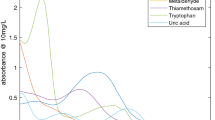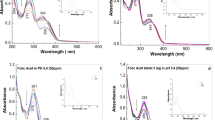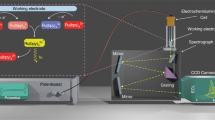Abstract
THE sensitivity of the normal human eye to light does not extend far below 400 mµ. Nevertheless, ultra-violet-absorbing compounds appear as dark spots on paper chromatograms illuminated with ultra-violet light. This is due to absorption of the light before it can excite the fluorescence of the paper, and constitutes one variety of quenching. Compounds which fluoresce in ultra-violet light will be detected on paper chromatograms if their fluorescence exceeds that of the surrounding paper. The light sources commonly employed emit the mercury lines at 254mµ or 366mµ. In chromatograms of biological extracts the short-wave lamp detects principally the absorbing compounds and the long-wave lamp fluorescing compounds. Beyond this the method possesses little inherent specificity. Thus compounds such as cortisone, nicotinic acid, caffeine and uric acid (λmax 240, 260, 273 and 292 mµ respectively) all appear indistinguishable as dark spots under the short-wave lamp. Furthermore, for substances such as oestrogens, the absorption maximum (280 mµ.) of which is very different from the 254 mµ emission of the handlamp, the method is relatively insensitive. A need therefore exists for an instrument with which absorption and activation maxima can be rapidly determined on the paper. I have accordingly designed an ultra-violet spectroscope in which the ultraviolet light is shifted to the visible region by the fluorescence of either the paper itself or a superimposed screen.
This is a preview of subscription content, access via your institution
Access options
Subscribe to this journal
Receive 51 print issues and online access
$199.00 per year
only $3.90 per issue
Buy this article
- Purchase on Springer Link
- Instant access to full article PDF
Prices may be subject to local taxes which are calculated during checkout
Similar content being viewed by others
References
Abelson, D. M., and Rosenfeld, L., J. Chromatog., 9, 522 (1962).
Abelson, D. M., Nature, 188, 850 (1960).
Arnold, W., Bührer, R., Euw, J. v., Lüscher, E., Schindler, O., Stich, K., Zoller, P., and Reichstein, T., Helv. Chim. Acta, 46, 178 (1963).
Tennent, D. M., Whitla, J. B., and Florey, K., Anal. chem., 23, 1748 (1951).
Brown, J. A., Anal. Chem., 25, 774 (1953).
Brown, J. A., and Marsh, M. M., Anal. Chem., 25, 1865 (1953).
Author information
Authors and Affiliations
Rights and permissions
About this article
Cite this article
ABELSON, D. Ultra-violet Spectroscopy in the Analysis of Chromatograms. Nature 208, 784–785 (1965). https://doi.org/10.1038/208784a0
Issue Date:
DOI: https://doi.org/10.1038/208784a0
Comments
By submitting a comment you agree to abide by our Terms and Community Guidelines. If you find something abusive or that does not comply with our terms or guidelines please flag it as inappropriate.



